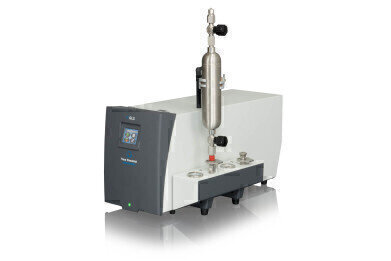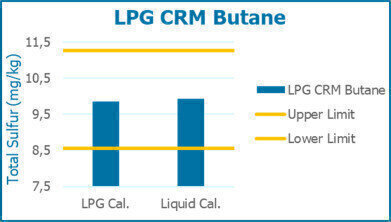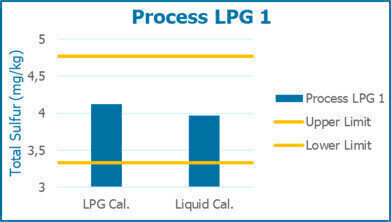Analytical Instrumentation
New Calibration Method for LPG Analysis: More Convenience, Less Costs
Nov 17 2020
TE Instruments upgraded the advanced GLS Gas & LPG autosampler to enable the analysis of Sulphur in LPG matrices by liquid solvent calibration. This calibration method eliminates the need to purchase expensive LPG CRM standards for instrument calibration.
ASTM D6667 – Instrument Calibration using LPG Calibration Mixtures
The ASTM D6667 states that typical calibration mixtures for analysing Sulphur in LPG are Dimethyl sulfide (sulphur source) in butane, propylene, or propane. These calibration mixtures are contained in pressurised cylinders to keep them liquefied, creating the right conditions for proper sample introduction. Generally, labs experience two downsides related to calibrating their element al combustion analyser with such calibration mixtures:
- Creating calibration curves with different LPG standards requires lots of manual handling. The operators must cope with various critical safety aspects and monitor if the correct cylinder pressure is maintained.
- LPG CRM standards are hard to obtain and entail high costs.
New Alternative: Instrument Calibration using Liquid Solvent Standards
A new alternative is calibrating the Sulphur analyser with liquid solvent standards, which increases user convenience and lowers operational costs considerably. TE Instruments upgraded its existing solution for Sulfur in LPG analysis to enable liquid solvent calibration. This makes it possible to choose from three different calibration methods. Define the calibration method you desire:
- Using multiple LPG reference standards with different concentrations that cover the analytical range.
- Using a single LPG reference standard and multiple loop injection.
- Using a liquid autosampler (e.g. Archie) and liquid solvent reference standards.
Demonstrating Excellent Results for Sulfur in LPG Analysis
TE Instruments has generated data to demonstrate that this new calibration method is an excellent alternative. The Xplorer-S was calibrated using liquid solvent standards introduced by the Archie autosampler. The actual LPG samples were introduced automatically by the GLS autosampler. The Xplorer-S provides accurate results with standard deviations well within the repeatability limits (r) of the ASTM D6667, regardless of which calibration method is selected. The repeatability limits as shown in the attached figures have been calculated by the formula r=0.2707∙X0.7.
Contact TE Instruments to discover more about our advanced solutions for the analysis of Total Sulphur in LPG!
Digital Edition
PIN 25.3 June/July
June 2024
Analytical Instrumentation - Recent Advances In Various Bench Scale Accelerated Oxidative Testing Methods For Fuels - Petrochemical Industry: Anton Paar Solutions Streamline Processes, Reduce H...
View all digital editions
Events
Jul 30 2024 Jakarta, Indonesia
Jul 30 2024 Jakarta, Indonesia
China Energy Summit & Exhibition
Jul 31 2024 Beijing, China
Jul 31 2024 Chengdu, China
Aug 05 2024 Moon Township, PA, USA




















